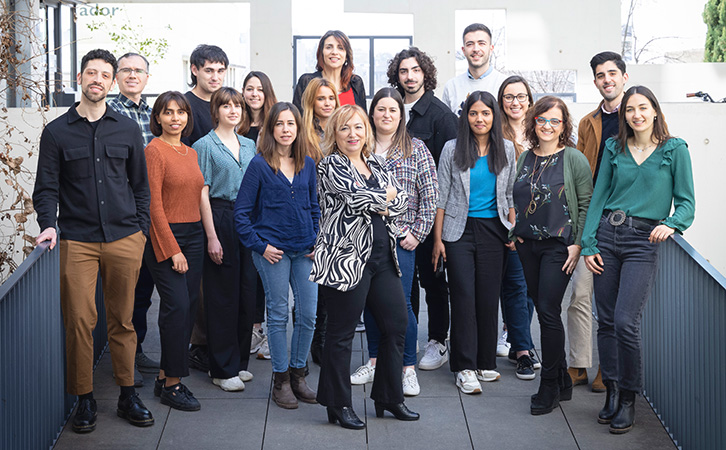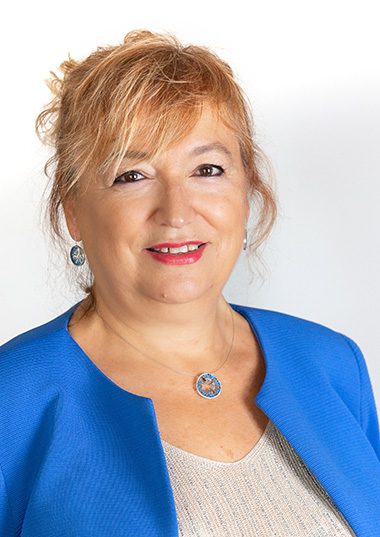NanoBiosensors and Bioanalytical Applications
Group Leader: Laura M. Lechuga

Main Research Lines
Plasmonics (SPR) and nanoplasmonics (LSPR) for biosensors
Nanophotonic biosensors based on integrated optics technology (MZI and BiMW)
Customised polymer microfluidic devices and flow delivery systems
Full integration in lab-on-a-chip and point-of-care biosensor analytical platforms
Universal biofunctionalisation techniques and biochip packaging
Bioanalytical applications in clinical, environmental and molecular biology, providing application-specific functionalities
The activities of the Nanobiosensors and Bionalytical Applications Group are focused on the development of novel nanobiosensor devices based on the principles of nanoplasmonics and silicon-based photonics, including surface biofunctionalisation, microfluidics for automatic fluid delivery and complete lab-on-a-chip integration for point-of-care devices. The application of nanobiosensor devices in real clinical diagnostics and environmental control is one of the group’s main objectives. Its research activities range from basic research to technological operation of working sensing platforms, as well as the transfer of its research outcomes to industry. The group is at the forefront of photonic biosensors development at the international level, an example of which is its bimodal waveguide interferometric device. Since 2006 the group has been associated to the ISCIII Biomedical Research Networking Centre (CIBER) as part of its Centre for Bioengineering, Biomaterials and Nanomedicine (CIBER-BBN).
Our work is focused on:
Development of photonic transducers based on silicon-related optoelectronics technology and nanoplasmonics which can afford competitive advantages compared to the state-of-the-art. Main goal is to improve sensitivity, miniaturisation and multiplexing capabilities of the sensors.
New strategies for universal biofunctionalisation techniques of biological receptors (as proteins or genomic strands), ensuring selectivity, life-cycle, non-fouling properties and reusability. Drying and packaging of the pre-functionalised biochips.
Full integration in point-of-care analytical platforms, including micro/nanofluidics, optical subsystems and interfaces, biocompatible encapsulation, hardware, and software. Deliver technologies to enable development of autonomous, reactive platforms that can be embedded in user environments.
Full demonstration of the applicability of our biosensor technology for real life requests, mainly for clinical diagnostics (i.e early cancer diagnostics, infectious diseases diagnosis in resource-limited settings), food and environmental control (i.e. microbiological infections and rapid detection of toxins). This line includes validation in clinical hospitals and environmental settings. Providing custom packaging solutions and application-specific functionalities.
Technology transfer of our nanobiosensor and point-of-care technologies. Enhanced usability facilitates a smoother transition between our laboratory prototypes to products, leading to increased commercialisation potential. We work in providing platforms, tools, IP, open-source and custom applications targeted to filling gaps in diagnostics.
Group Leader

Laura M. Lechuga
CSIC Research Professor
laura.lechuga@icn2.cat
Prof. Laura M. Lechuga received her PhD in Chemistry from the Universidad Complutense de Madrid (Spain) in 1992. She is Full Professor of the Spanish National Research Council (CSIC) and Head of the Nanobiosensors and Bioanalytical Applications Group at the Catalan Institute of Nanoscience and Nanotechnology (ICN2) in Barcelona (Spain) and at the Networking Biomedical Research Center (CIBER-BBN).
The principal focus of her research is the development of novel nanobiosensor devices based on Nanoplasmonics and Silicon photonics principles for point-of-care diagnostics. Prof. Lechuga is a world reference in the Photonic Biosensor area, making key contributions and opening new horizons in this field. Her research activities cover from fundamental research to the technological operation of complete sensing platforms, including the technological transfer into products of social applicability. Her Group is considered as a world reference in this field.
She has published over 300 publications (articles, book chapters and proceedings), has 8 families of patents and 4 trade secrets, and has presented her work worldwide in more than 490 invited talks. She has co-founded two spin-off companies. She is Associate Editor for international journals in the field of engineering, chemistry, and optics, belongs to the Scientific Advisory Committees of highly prestigious national and international institutions and has participated regularly in high-level international scientific evaluation panels (such as Panel Chair for ERC Adv. grants).

